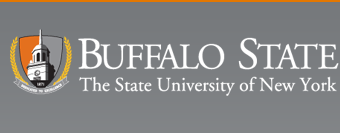Date of Award
12-2005
Access Control
Open Access
Degree Name
Creative Studies, M.S.
Department
International Center for Studies in Creativity
Department Home page
http://creativity.buffalostate.edu/
Abstract
The main focus of this experimental study was to identify how I used the aspects of Creative Problem Solving (CPS) in the Living Environment classroom and to compare its effectiveness to how I previously taught the course using traditional teaching methodologies. The research conducted included: 1) A qualitative analysis comparing the performance of students taking the Living Environment course during the 2002-2003 and 2003-2004 academic school years when I used traditional teaching methods to the 2004-2005 academic school year when I used CPS to teach the same curriculum; 2) A quantitative analysis of teacher feedback identifying the effectiveness of implementing CPS in the classroom; 3) A quantitative analysis of student feedback reflecting their growth in the ability to solve science problems through the use of CPS. Quantitative data recording student performance were collected through the analysis of student Report Cards at the end of each academic school year. The data collected indicate that students who took part in the experimental group (classes where CPS was used) scored higher averages in the 2nd, 3rd, and 4th marking periods. These students also maintained a higher overall average, achieved higher Regents Test scores, and attained a higher level of Mastery on the Regents Exam than did students in the control group (traditional teaching style). Finally, the experimental group completed the Living Environment curriculum in nine fewer days, thus enabling them to have additional review time upon the conclusion of the school year. Qualitative feedback from the teacher indicates that students who used CPS in the classroom were able to think more creatively and independently. Students were able to use CPS to solve a wide array of problems thus resulting in improved classroom participation, increased motivation, and increased security in sharing ideas. A positive learning environment was created that fostered the expansion of creative horizons in individual students, and promoted a feeling of trust and respect in the classroom. Qualitative feedback from students indicates that using CPS gave students ownership over the learning process and empowered them to solve problems inside and outside of the classroom. They believed that CPS made the class fun, thus stimulating their creative abilities. Students reflected an improved self-confidence and motivational level when confronted with difficult situations because of their newfound ability to work through the stages of CPS in order to generate ideas and develop a working process plan. Using CPS in the classroom provided students with the opportunity to bring their own interests into the classroom and invoked a sense of academic freedom that was otherwise unfelt in other academic arenas.
Recommended Citation
Kolbert, Steven C., "An Analysis of an Experimental Study Measuring the Effectiveness of Using Creative Problem Solving in the Living Environment Curriculum" (2005). Creativity and Change Leadership Graduate Student Master's Projects. 84.
https://digitalcommons.buffalostate.edu/creativeprojects/84


